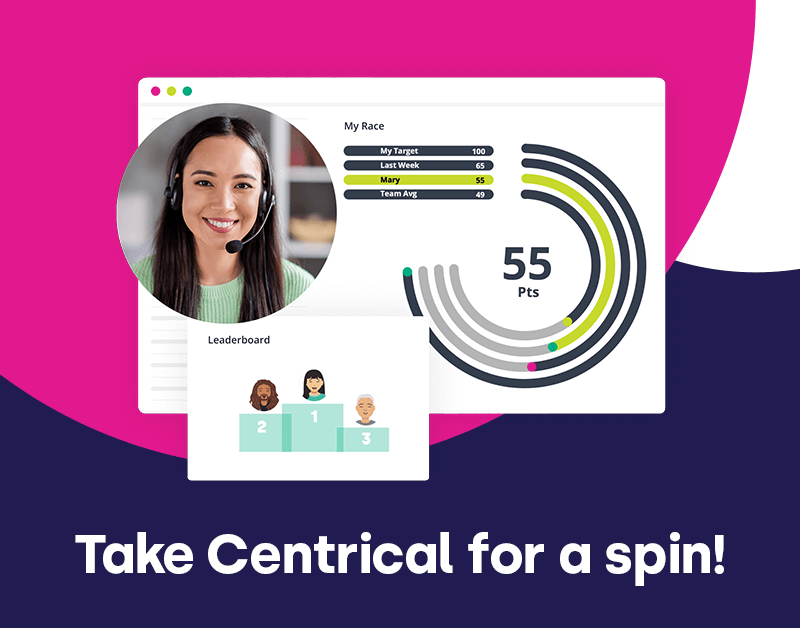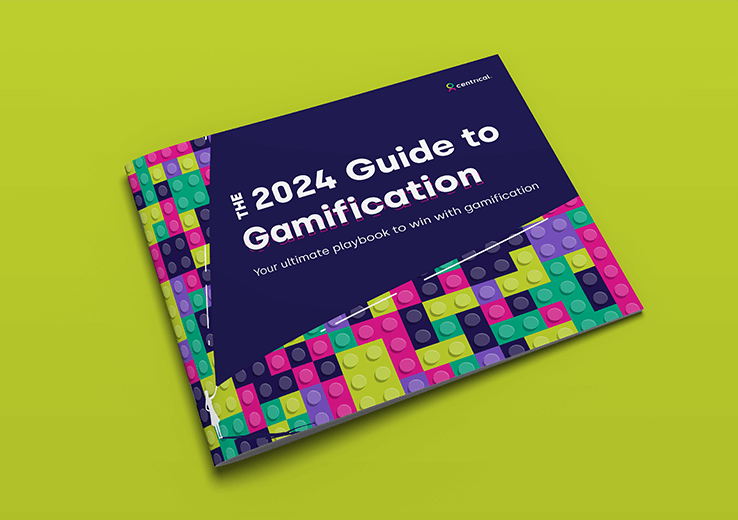Why Incentives in the Contact Center Aren’t Enough and How Gamification Can Provide Motivation and Emotional Engagement
- Current incentives in the contact center are based on “averaging out” over a month, and agents know this. As a result, they don’t go the extra mile.
Sampling and measurement of FCR and other KPIs in call centers is usually based on “Customer Voice”, which is a monthly average of customer survey responses. The response rates to these surveys are very low (2%-12%), so agents know there are more chances that the call won’t be surveyed; therefore, agents don’t always do their best with each customer interaction.
A common problem we see in call centers, for example, is agents that avoid taking additional calls towards the end of their shift, making their last call take as long as they can.
- When you use gamification, agents care about each and every day and each and every interaction
When using gamification, each and every customer interaction counts. Activities aren’t averaged out over a month, but the count for each and every day counts. As a result, agents are driven to take another call to raise their KPI counts for the day. This is because gamification rewards agents for each interaction and therefore makes each and every call important for the agent. Agents also feel a sense of choice – they “chose” to take the extra call to get extra points. They feel empowered.
- Gamification is extremely beneficial for ongoing communication and knowledge transfer among team members
When new information or guidance pops up, team leaders can push it through the game instead of delivering the information verbally. Information travels better when pushed through the interface of the game. Instead of running around to make sure agents are aware of a new deal or product, which is effective for about 20% of agents, we see that when the information is disseminated through a gamified microlearning engagement system, 93% of agents retain that information.
- Using gamified eLearning in the contact center saves time and money and increases productivity
In most call centers and in most BPO environments, there’s a requirement for continuous learning. Typically, each agent has to spend a minimum of 8 hours a month training. This training requires pulling the agents out of the floor, putting them in a classroom and training them. This involves no working, no incentives and lost labor.
Using gamified microlearning lets agents access learning at their desks, when needed, and gives them more power to choose when and what to learn. Since they complete learning in between calls, pre-shifts or post-shift, their productivity isn’t affected. Additionally, learning can be personalized or delivered just in time, for instance when a new sales campaign begins.
- Gamification can drive agents to reflect on their work and improve it
In some cases, we can ask agents to self-reflect on how well they’ve done their work. In this case, agents can be asked to check a box if they completed service standards such as resolving the issue, satisfying the customer, educating the customer etc.
As agents were asked to grade themselves, they were actually cued to think about their actions and ask themselves questions. It naturally made them have those standards on the top of their mind with every interaction. Putting trust in the hands of the agents encouraged them (the call center environment takes control away from them and this approach gives it back) and actually improved their service!
In this sense, gamification serves as a micro-behavioral reminder, asking for a self-reflection after agents made the selection and graded their performance. That way team leaders can check if employees are executing what they have just learned. It breaks the “autopilot mode” agents sometime get caught up in, since you can use the interface to visualize, measure and repeat these self-selection items, making these topics front and center for the agent’s .
- Gamification is more than just “checking the box”
As opposed to traditional LMS where agents would just check a box to indicate completion and finish the process, a gamified application is engaging for employees, providing recognition for their job with badges, points and rewards, so the process of completing missions is more exciting and meaningful for them.
- Gamification can also drive team leaders to do a better job
Since on most call center team leaders are knowledgeable senior agents and not managers, if there is no personal return for them they won’t have any interest in the game and won’t promote it. In order to drive better behaviors, team leaders need to have more control in rewarding and recognizing team members. The Gamification interface can be a tool that encourages and excites team leaders, as it gives them the power to encourage and excite their team members. Team leaders can use the interface to challenge team members and also, to compete amongst themselves.
Conclusion
Gamification is a successful tool for changing agent behavior, as it measures performance in a way that makes the agents care and consider every call as important. Gamification provides an efficient solution for learning and training without harming productivity and is extremely useful for knowledge transfer. The many game elements and digital motivation tools creates engagement and can excite both agents and team leaders.
Engage and motivate your frontline teams
Improve performance with an AI-powered digital coach
Deliver world class CX with dynamic, actionable quality evaluations
Boost performance with personalized, actionable goals
Nurture employee success with the power of AI
Listen and respond to your frontline, continuously
Drive productivity with performance-driven learning that sticks
Drive agent efficiency, deliver client results
Keep tech teams motivated and proficient on products and services while exceeding targets
Maintain compliance while building customer happiness and loyalty
Enlighten energy teams to boost engagement
Engage, develop, and retain your agents while driving better CX
Improve the employee experience for your reservations and service desk agents



 Madeleine Freind
Madeleine Freind
 Natalie Roth
Natalie Roth Linat Mart
Linat Mart












 Doron Neumann
Doron Neumann Gal Rimon
Gal Rimon Daphne Saragosti
Daphne Saragosti Ella Davidson
Ella Davidson Ariel Herman
Ariel Herman Ronen Botzer
Ronen Botzer